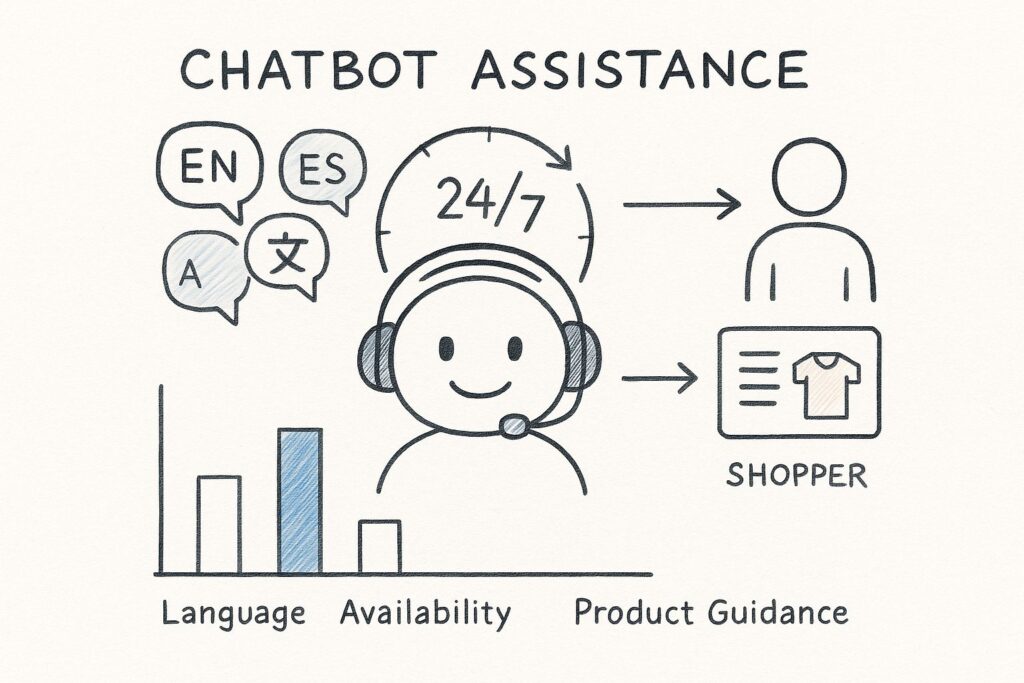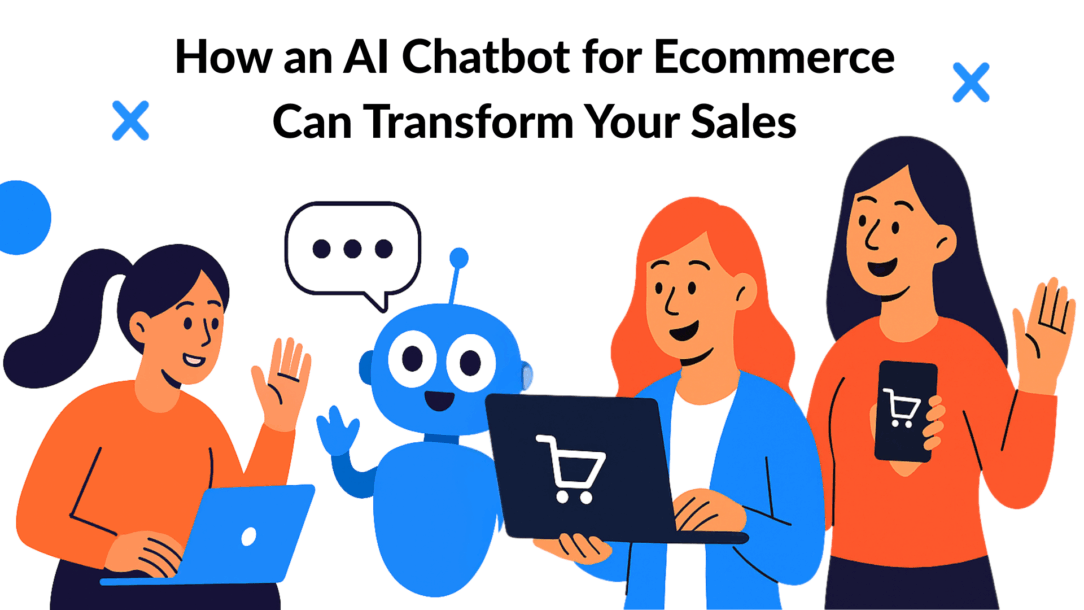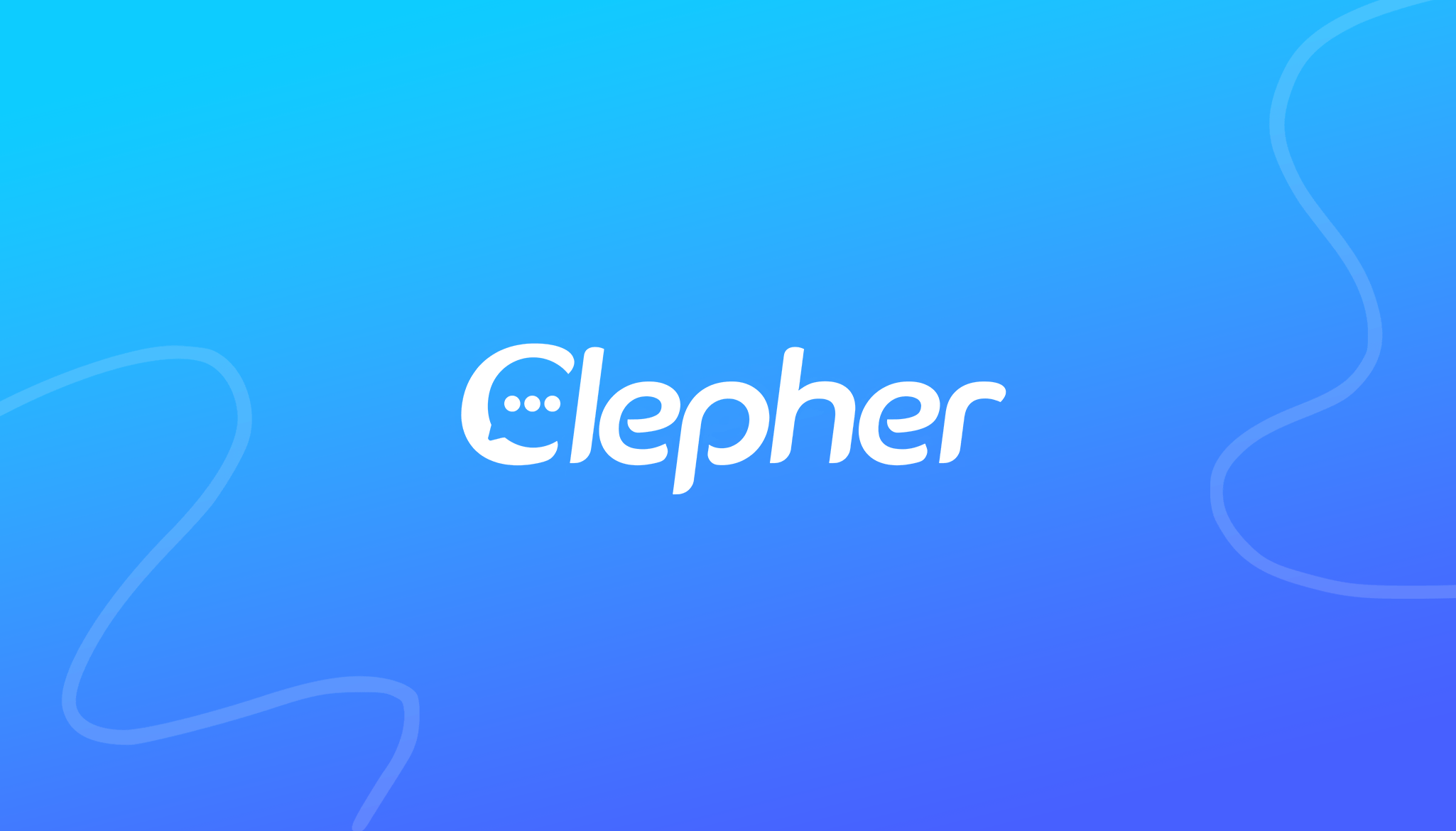Imagine a salesperson who works 24/7, never calls in sick, and instantly knows how to guide every single visitor to their perfect product. That’s not a dream—it’s what a powerful AI chatbot for ecommerce can do for your online store, starting today. These aren’t just fancy FAQ pop-ups; they are proactive sales engines that transform your website from a static catalog into a dynamic, profitable conversation.
What is an AI Chatbot and Why Does it Matter for Ecommerce?
Think of an AI chatbot as your smartest, most reliable employee. It’s an automated assistant that engages with your website visitors in real-time, day or night. We’ve all battled those clunky, frustrating bots of the past that felt like navigating a broken phone menu. Modern AI chatbots are a world away from that experience.
Using natural language processing (NLP), today’s bots understand what customers actually mean, even with typos or slang. This lets them have genuinely helpful, human-like conversations that guide shoppers, solve problems, and directly drive sales.
The Big Leap: From Rigid Scripts to Smart Conversations
The real game-changer is the shift from pre-programmed, linear scripts to genuine learning. An old bot could only follow a strict path. If a user asked an unexpected question, the conversation would hit a dead end, leaving the customer frustrated.
An AI-powered bot, however, learns from every interaction. It gets smarter, more accurate, and more effective with each conversation it has, continuously improving the customer experience.
This infographic captures how an AI chatbot becomes a multilingual, around-the-clock guide for your customers, turning browsers into buyers.

chatbot assistance
The core functions—constant availability and the ability to serve a global audience—create a direct line between shoppers and the products they’re looking for.
The market growth tells the same story. The AI-enabled ecommerce market is projected to hit $8.65 billion by 2025. Stores already using these tools are seeing a 25% jump in lead conversions, and a staggering 97% of retailers plan to increase their AI spending.
The Takeaway: An AI chatbot automates the repetitive, time-consuming tasks that bog down your team. This frees up your people to focus on high-value customer relationships and complex problem-solving.
This is the essence of smart ecommerce automation. By automating initial customer touchpoints, you ensure no lead is missed and every shopper feels heard—instantly. Your website stops being a passive storefront and becomes an active partner in the customer’s journey.
How AI Chatbots Turn Conversations into Conversions
Stop thinking of an AI chatbot as a simple Q&A tool. Instead, see it as a high-performance sales channel. It’s the difference between leaving a shopper to wander your store alone versus giving them an expert personal shopper to guide them from the moment they arrive.
Instead of waiting for a question, a smart chatbot proactively engages visitors, turning aimless browsing into a focused, helpful conversation.
For example, a visitor lands on your skincare site. The bot immediately asks, “What’s your main skin concern? Oily, dry, or combination?” Based on their answer, it instantly recommends a handful of perfectly suited products. Just like that, you’ve removed the guesswork that causes so many potential customers to give up and leave.
This guided selling approach delivers striking results. Shoppers who engage with an AI chatbot convert at a rate of 12.3%—a huge leap from the 3.1% conversion rate for those who don’t.
On top of that, purchases are completed 47% faster with a bot’s help, and returning customers who use chat spend 25% more on average. The data clearly shows how conversational AI directly boosts your bottom line.

conversations to conversions
AI Chatbot Impact on Ecommerce KPIs
The data clearly shows how a chatbot moves the needle on critical sales metrics. Here’s a quick breakdown of the performance uplift you can expect.
| Metric | Without AI Chatbot | With AI Chatbot | Performance Uplift |
|---|---|---|---|
| Conversion Rate | 3.1% | 12.3% | +297% |
| Purchase Speed | Slower | 47% Faster | -47% Time to Buy |
| Returning Customer Spend | Baseline | +25% More | +25% |
As you can see, implementing an AI chatbot isn’t just about improving support—it’s a direct strategy for boosting revenue and efficiency across the board.
Proactive Strategies to Close More Sales
A great chatbot doesn’t just react; it proactively steps in to prevent lost sales. Two tactics are especially effective:
- Abandoned Cart Recovery: A shopper is about to leave a full cart behind. The chatbot can pop up with a perfectly timed message: “Hey, it looks like you left something behind! Can I answer any questions about shipping?” It can even offer a small, time-sensitive discount to provide that final nudge to purchase.
- Overcoming Last-Minute Objections: How many sales die at checkout? A chatbot instantly resolves final-second doubts by providing immediate answers on return policies, delivery times, or payment options. This builds crucial trust right when it matters most.
The Takeaway: A great AI chatbot doesn’t just answer questions—it anticipates them. It proactively removes obstacles in the buying journey, making the path to purchase as smooth as possible for every single customer.
While chatbots are a powerful tool, they work best as part of a larger optimization effort. Exploring different strategies to increase website conversions will give you a broader context for improving your sales process.
By combining smart automation with solid conversion principles, you build a much more resilient and effective sales funnel. For a deeper dive, check out our guide on how Messenger bots can improve sales conversion rates and retention.
Real-World Chatbot Strategies for Online Stores
Let’s move past theory. How does an AI chatbot for e-commerce actually work in the real world? These are engines for driving sales, personalizing the shopping experience, and making your operations far more efficient.
Picture a home decor store. A customer is looking for a new sofa. Instead of dumping them on a product page with a hundred options, the chatbot acts like a virtual interior designer.
It might ask, “What’s your living room style? Modern, rustic, or minimalist?” Then, based on the answer, it suggests not just sofas but also matching coffee tables and accent chairs to complete the look.
That’s guided selling in action. It turns a simple search into a personal consultation and boosts the average order value.
From Skincare Routines to Order Tracking
The best part is how adaptable these strategies are. Each one can be laser-focused on solving a specific business problem, whether that’s boosting sales or cutting down on support tickets.
Here are a few powerful, real-world examples:
- Beauty Brand Product Finders: A cosmetics brand uses a chatbot to run a quick skincare quiz. It asks about skin type and concerns, then instantly recommends a full, personalized routine—cleanser, serum, and moisturizer. This cuts through the noise for the customer and builds trust.
- Fashion and Apparel Fit Guides: Returns are a huge cost for clothing stores. A chatbot can act as a fit expert, asking for a shopper’s height, weight, and even the size they wear in other brands. It then uses that data to recommend the best size for a specific item, helping to slash return rates.
- Automated Post-Purchase Support: The number one question any online store gets? “Where is my order?” A chatbot can handle this on autopilot by connecting directly to shipping carrier APIs. It gives customers real-time tracking info instantly, no human needed.
The Takeaway: An effective chatbot strategy focuses on a specific, high-impact customer interaction. By automating one key part of the journey—whether it’s product discovery or post-sale support—you free up your team and create a better experience for shoppers.
Why Customers Are Ready for Chatbots
This isn’t just a business trend; customers are genuinely on board. Online retail has the highest chatbot acceptance rate of any industry, with 34% of consumers comfortable using them for shopping-related questions.
The most common use case? Order tracking and cancellations. These are the routine yet critical tasks that a chatbot can handle flawlessly every single time. By implementing these targeted strategies, you’re not forcing a new behavior—you’re meeting customers exactly where they already are.
Choosing and Launching Your First AI Chatbot
Jumping into AI chatbots can feel like a huge leap, but it’s simpler than you might think. The key is to start with a clear, focused goal. You aren’t just adding another widget to your site; you’re solving a real business problem.
Before looking at any platforms, ask yourself one crucial question: What is the single biggest win I am looking for?
Are you trying to eliminate the flood of “where is my order?” tickets? Or is your main goal to actively guide shoppers to the right products and boost your conversion rate?
Defining your primary objective is your north star. It will guide every decision, from the features you need to the conversation flows you design, preventing you from getting distracted by shiny features you’ll never use.
Evaluating Your Options: A Practical Checklist
Once you know why you need a bot, it’s time to find the right tool. Not all AI chatbot platforms are created equal, especially for ecommerce. Think of it like hiring a new team member—they need the right skills and must integrate smoothly with your existing systems.
Use this checklist to evaluate your options:
- Platform Integration: Does it connect directly to your ecommerce platform, like Shopify, BigCommerce, or Magento? Native integration is non-negotiable. It’s what lets your bot pull real-time product data, check inventory, and look up orders.
- Ease of Use: Is it built for marketers or developers? Look for a no-code, drag-and-drop builder. You should be able to create and tweak conversation flows without writing a single line of code.
- Scalability: Will this tool grow with your business? The right AI chatbot for ecommerce should handle an increasing number of conversations and let you build more complex automations as your brand expands.
- Customization: Can you make the chatbot look and feel like your brand? You need to be able to customize the widget’s colors, upload your logo, and, most importantly, define its tone of voice for a consistent customer experience.
From Setup to a Successful Launch
With the right platform chosen, your focus shifts to implementation. A successful launch is all about preparation. You can’t just flip a switch and hope for the best.
First, train the AI by feeding it information about your business. Upload your product catalog, provide detailed FAQs, and share links to your shipping and return policies. The more context it has, the better it will be at answering questions accurately.
The Takeaway: The most successful chatbot launches start small. Automate one or two high-impact, repetitive tasks first—like order tracking or answering your top 5 FAQs. Nail those, gather feedback, and then expand its duties over time.
Finally, design your first conversation flows. Map out the simplest, fastest path for a customer to solve their problem. For an order status query, the flow is straightforward: ask for the order number, look it up, and provide a direct tracking link. Keeping it clear, concise, and focused on a quick, correct answer guarantees a smooth rollout and immediate wins.
Optimizing Your Chatbot for Peak Performance
Launching your chatbot is just the starting line. The real value comes from treating it as an evolving tool that you continuously improve. This isn’t about endless technical fixes; it’s about refining the customer experience until it’s seamless and on-brand.
Think of your chatbot as a new team member with a distinct personality. Is your brand playful and fun, or more straightforward and professional? Weaving that voice into your bot’s scripts makes interactions feel less robotic and more like a genuine conversation, reinforcing your brand identity.
Crafting a Smarter Conversation
Peak performance starts with understanding what actually happens inside the chat window. First, set clear expectations. Let users know right away what the bot is great at—like tracking an order—and what it can’t do. This transparency builds trust and prevents frustration.
Equally important is creating a smooth handoff to a human. When a question gets too complex, the bot shouldn’t create a dead end. It needs to be smart enough to pass the customer, along with the entire chat history, to a live agent. This simple step means the customer never has to repeat themselves, turning a potential breakdown into a positive experience.
The Takeaway: The goal of optimization isn’t just to automate more questions. It’s to ensure every single interaction—whether fully automated or handed off to a human—is as helpful, efficient, and on-brand as possible.
Using Data to Drive Improvements
Your chatbot is a goldmine of customer insights. By regularly reviewing your chat logs, you can spot common questions, uncover pain points, and identify emerging trends. Are people constantly asking about a specific product feature? That’s your cue to update your product pages and your bot’s knowledge base.
To get the most out of your bot, make these tactics part of your routine:
- Analyze Unanswered Questions: Keep a running list of queries your bot couldn’t handle. This is your to-do list for expanding its skills and training it on new topics.
- Refine High-Traffic Flows: Identify the most common conversation paths, like checking an order status, and look for ways to make them even faster. Can you cut out a step? Can you offer the information more proactively?
- Monitor Handoff Rates: If a high number of chats on a specific topic are being passed to human agents, you’ve found a weak spot. Dig into those conversations to see where the bot is falling short and tweak its script accordingly.
This cycle of improvement is the core of any good automation strategy. For a deeper dive, check out these essential chatbot best practices that can help you unlock your bot’s true potential.
Measuring Success and Proving Chatbot ROI
Launching an AI chatbot for ecommerce is a great first step, but how do you prove it’s actually making a difference? You need to track performance in a way that connects directly to business results.
This isn’t about getting lost in complex analytics. It’s about focusing on the numbers that matter to your bottom line. Ask yourself: what does a “successful” bot look like for my store? Is it handling more customer questions to free up my team? Is it directly helping shoppers find and buy products?
Key Metrics for Chatbot Performance
To get a clear picture of your chatbot’s impact, you need to track a few critical metrics. Think of these as telling the story of how much value your bot is creating.
Start with these three core areas:
- Containment Rate: This is the percentage of conversations your chatbot handles completely on its own, without needing a human to step in. A high containment rate is a direct sign of cost savings, as it shows the bot is successfully deflecting routine tickets from your support team.
- Chat-Influenced Conversion Rate: This metric tracks how many people who talk to the chatbot end up buying something. It’s the clearest way to measure how your bot is directly impacting sales and revenue.
- Customer Satisfaction (CSAT) Score: At the end of a chat, ask for a quick thumbs-up or thumbs-down on the experience. This feedback is gold, telling you if your bot is just efficient or if it’s actually helpful and leaving customers happy.
If you want to go deeper, our complete guide to essential chatbot KPI metrics provides a full breakdown.
Calculating Your Return on Investment
Proving ROI comes down to simple math: add up the money you’re saving and the new revenue you’re generating, then compare it to the chatbot’s cost. The goal is to build a solid business case showing the bot is a revenue-generating asset, not just an expense.
The Takeaway: The real power of an AI chatbot lies in the tangible financial value it creates. A well-measured bot can clearly demonstrate its worth through lower support costs and higher sales.
You don’t need a complicated spreadsheet to get started. Here’s a simple framework to see the financial impact clearly.
AI Chatbot ROI Calculation Framework
This table breaks down how to connect your chatbot’s performance to real dollars and cents.
| Metric | Formula / How to Measure | Example Data | Business Impact |
|---|---|---|---|
| Support Cost Savings | (Tickets Handled by Bot) x (Avg. Cost Per Human Ticket) | 500 tickets x $5/ticket = $2,500/month | Lower operational expenses and a more efficient support team. |
| Revenue from Chat | (Purchases after Chat) – (Your Store’s Baseline Conversion Rate) | 100 sales x $50 avg. order value = $5,000/month | Direct, measurable revenue growth driven by the chatbot. |
| Lead Generation Value | (New Leads Captured) x (Avg. Lead Value) | 200 leads x $10/lead = $2,000/month | A bigger, more qualified sales pipeline for future growth. |
By tracking these key figures, you move from “I think the chatbot is helping” to “I can prove the chatbot generated $9,500 in value this month.” That’s the kind of data that makes a real difference.
Common Questions About E-commerce AI Chatbots
Still have a few questions? Let’s tackle some of the most common concerns business owners have before implementing an AI chatbot.
Ready to turn conversations into conversions? Clepher makes it easy to build an AI-powered chatbot that markets, sells, and supports your customers 24/7. Start your free trial today.
Related Posts



